13 Salty Facts About Mr. Peanut

On January 22, 2020, in a morbid bit of pre-Super Bowl marketing, Planters took to the internet to announce that Mr. Peanut—the dapper little legume who has been peddling Planters peanuts for more than a century—has died at the ripe old age of 104. In order to pay tribute to the literal face of America's peanut industry, we’ve assembled some facts and history about this shell of a man.
1. Mr. Peanut was created by a 14-year-old.
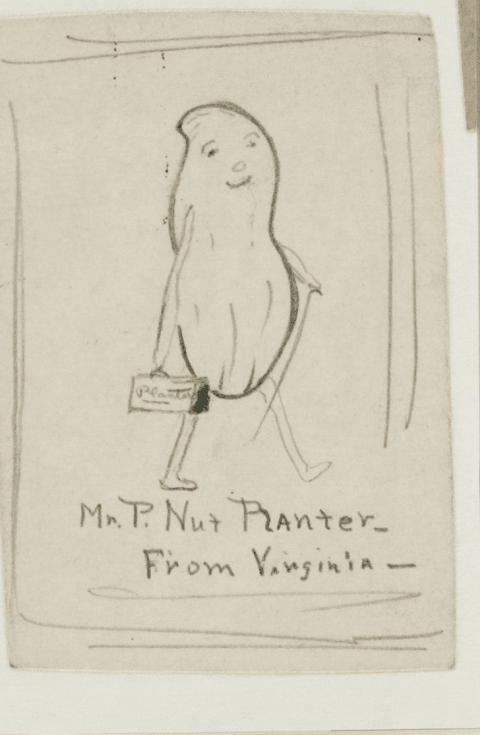
Mr. Peanut wasn’t hatched from a cynical ad firm brainstorming session. His adorable visage was the product of a 14-year-old from Suffolk, Virginia named Antonio Gentile. Gentile entered a contest held by the Planters Chocolate and Nut Company in 1916 to crown a new peanut mascot. The aspiring Don Draper sketched out a doodle of a “Mr. P. Nut” strutting with a cane. After getting freshened up by a graphic designer—including donning his trademark spats and monocle—Gentile’s design was picked up and he was awarded $5.
(Postscript: The Gentile family became friendly with the Obici family, owners of the Planters empire, and Gentile’s nephews once suggested that the Obicis helped put him through medical school; he became a surgeon.)
2. Mr. Peanut has a full name.
According to Planters, Mr. Peanut is something of an informal moniker. The full name given to him by Gentile was Bartholomew Richard Fitzgerald-Smythe.
3. Mr. Peanut once weighed more than 300 pounds.
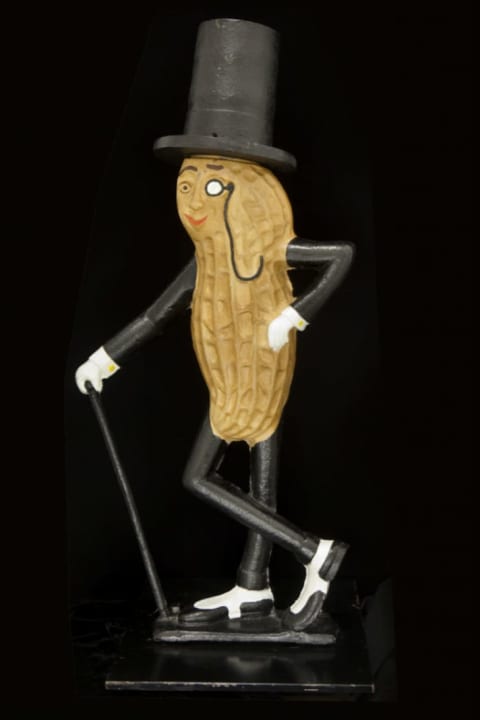
Although peanuts can be a highly sensible snack, full of healthy fats and protein, they can also be a source of too many calories. Case in point: the 300-pound cast iron Mr. Peanut, a display item made in the 1920s and 1930s. Planters would use the heavyset mascot on top of a fence post at their Wilkes-Barre, Pennsylvania factory.
4. Mr. Peanut survived the Great Depression.
During the economic downturn of the 1930s, things like “snacks” and “nutrition” suddenly became optional rather than expected. Though many food products struggled to cope with slimmed-down wallets, Planters plastered Mr. Peanut on bags of peanuts that sold for just five cents each. Declaring it a “nickel lunch,” the company was able to use the affordability of peanuts as a selling point.
5. Mr. Peanut went to war.
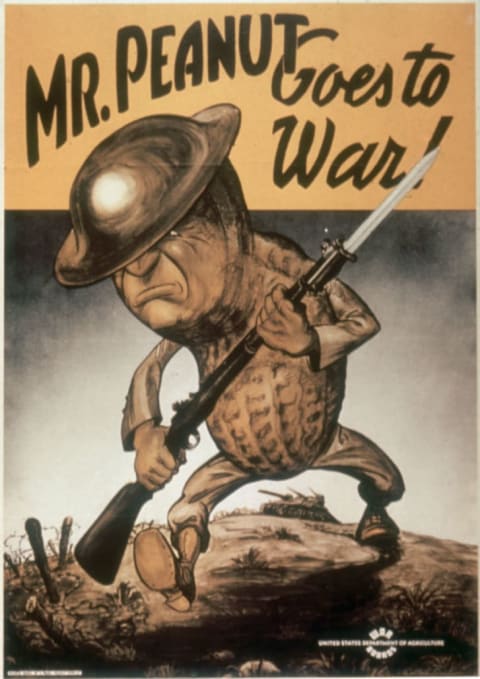
Specifically, World War II. When the U.S. entered the conflict, Mr. Peanut volunteered for service as a character featured on stamps and propaganda posters.
6. Mr. Peanut is a monocle enthusiast.
Food mascots rarely take sides on hot-button issues, but Mr. Peanut made an exception in 2014 when a fashion movement threatened the return of the monocle. After getting wind of men wearing the single-lens reading accessory, Mr. P issued a press release stating that he took notice of the “hipsters” following in his “stylish footsteps” and implied few could pull it off. The monocle has yet to fully re-emerge.
7. Mr. Peanut's Nutmobile predates the Wienermobile.

Though the Oscar Mayer Wienermobile usually takes most of the engine-driven PR credit, Planters actually introduced the NUTMobile, a shell-shaped portable advertising car, in 1935—a year prior to the Wienermobile’s introduction. A Planters salesman designed and drove the car, adding a decorative Mr. Peanut passenger behind him. (Mr. Peanut did not operate the vehicle because Mr. Peanut is not real.)
8. Mr. Peanut is in the Smithsonian.
How influential has Mr. Peanut been to the food industry? In 2013, the Smithsonian admitted his cast-iron incarnation into its National Museum of American History. The statue was exhibited as part of a series on marketing for the institution’s American Enterprise series; Antonio Gentile’s family also donated his original sketches for posterity.
9. Fans didn't want Mr. Peanut to change.
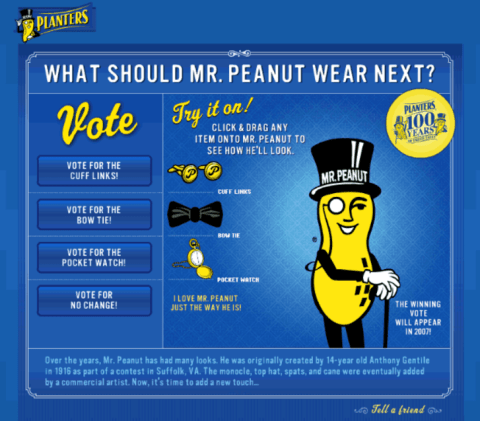
For the company's 100th anniversary in 2006, Planters held an online vote to see whether peanut aficionados wanted to see Mr. Peanut experiment with a sartorial change: Fans could vote for adding cufflinks, a bow tie, or a pocket watch. In the end, the ballot determined they wanted to keep him just the way he is.
10. Mr. Peanut has a fan club.
Mr. Peanut has appeared in so many different licensed products in an effort to expand his popularity—clocks, peanut butter grinders, and coloring books among them—that a collector was having trouble keeping track of them all. In 1978, Judith Walthall founded Peanut Pals, a Mr. Peanut appreciation club that circulates a newsletter and holds conventions. You can join for $20—practically peanuts.
11. Mr. Peanut has remained mostly silent.
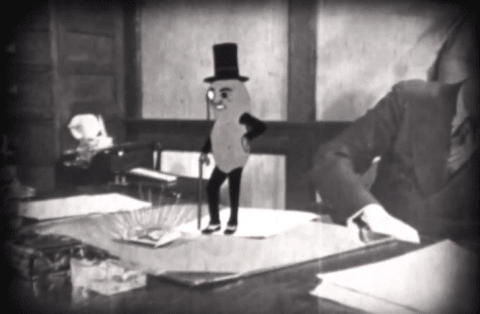
Mr. Peanut was already a few decades old when television came into prominence, which afforded him an opportunity to jump off packaging and magazine pages. Despite the new medium, Planters decided they liked him best when he didn’t talk—at all. The mascot was silent all the way up until 2010, when Robert Downey Jr. was commissioned to deliver his first lines. Bill Hader took over voicing duties from Downey in 2013.
12. Mr. Peanut found a buddy.
When Planters unveiled an updated Mr. Peanut for contemporary audiences in 2010, he was sporting a grey flannel suit as well as a new sidekick—Benson, a shorter, single-peanut tagalong. A Planters spokesman clarified to The New York Times that the two are “just friends” and live in separate residences.
13. In the 1970s, Mr. Peanut ran for Mayor of Vancouver.
Amid a burgeoning alternative art scene in 1970s Vancouver, a performance artist named Vincent Trasov decided it would be interesting to run for mayor of the city while in the guise of Mr. Peanut. Hailing from the “Peanut Party” and meant to be a commentary of the Nixon-era absurdities of politics, he was endorsed by novelist William S. Burroughs and received 2685 ballots—3.4 percent of the vote.